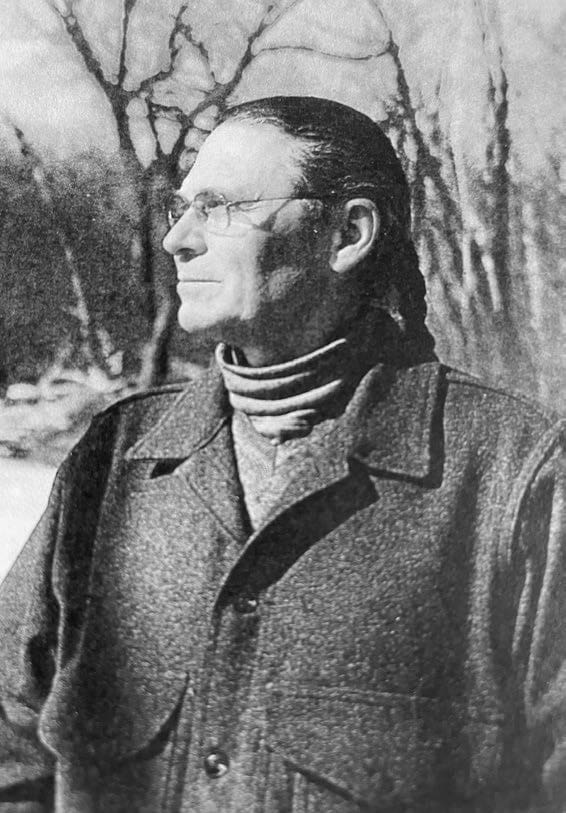By Lawrence Doe
One of my more poignant environmental lessons happened while I was working in a remote logging camp on the Bradfield River in SE Alaska. I was one of 110 men living in bunk houses and eating in a large dining hall. These structures were built where a mountain stream joined the river. At the confluence of the river and ocean were the large equipment repair barns and deep water where log rafts were made ready for their trip to the mills in Wrangle. At the end of the workday, all those men would line up at the steps to the dining hall for dinner. The conversations were lively between the fellers, choker-setters, mechanics, drivers, and others all waiting to be fed by the real heroes of the camp. Two men fed us all. Just two and their food was so good the waiting line sounded of anticipation mixed with tired and hungry. Except this one evening.
Over the previous night, the electrical transformer blew, leaving the entire camp without electricity. The men used the stream behind the dining hall for their morning toilet. Didn’t seem like a big deal, but that evening the food line outside the hall was unusually quiet. As I got closer to the entry porch, I could see a two-gallon clear glass pickle jar with something floating in it. A large piece of human feces was evident as we filed by. The handwritten sign stated, “Until electricity is restored, do your toileting downstream from the cook shack where we drew water to cook your supper.” Dinner was unusually quiet that evening.
Water and air have long been used by us humans to rid ourselves of all manner of waste. Smoke from campfires and industrial smoke stacks has always been carried away by the wind. Water has always carried away our individual bathing and industrial-scale waste by-products. However, in the modern, highly populated and industrial world in which we live, there is no such thing as safety in “downstream”. There is no safe place in soil, water, or air for our waste of any kind.
There is plenty of waste. Beyond the news of massive problems due to over-flooding of sewage treatment facilities, there are many less newsworthy sources of waste being dumped into the global air and water. According to the International Energy Agency, in 2021 alone, the fossil fuel extraction sector leaked into the atmosphere enough methane to fuel all Europe’s power sector—180 billion cubic meters of the primary component in natural gas and a potent greenhouse gas. Cargo containers regularly fall off large ships as they ply the world’s oceans. The percentage lost is small, but given the enormous number of containers in use, even the small number lost is a huge waste. The containers may be loaded with Christmas toys or toxic chemicals sitting on the ocean floor.
The solution to these and many other castoffs is to find usefulness in that waste. There are many examples of finding use and economic value in what was once discarded. Sawmills used to leave enormous piles of sawdust to rot over time. Now that sawdust is mixed with glues to create sheets of MDF (medium-density fiberboard) used in furniture and cabinetry. Even culled logs that used to decompose are now chipped up to make OSB (oriented strand board), used to sheath house walls and roofs. The advantages are clear in finding new uses for our waste by-products. Imagine the lost revenues and environmental damage caused by careless shipping practices and methane escaping from fossil oil and gas extraction.
There is a new source of enormous waste in the heat being created by large data and bitcoin mining operations. Their vast banks of computers generate heat that must be removed from the buildings. Water is used in an “open loop” system where it is drawn from local surface or groundwater, then returned to its environmental source, carrying all that heat. This current practice is raising water temperature in lakes, streams, and groundwater to the detriment of entire ecologies.
There are several better ways to deal with the heat by-product. A “closed loop” cooling system would not dump heat into water sources. Our vehicle engine cooling systems are closed loop and have been successful for a hundred years. The reclaimed heat is used to warm us while driving in winter. This begs the question of why data centers would dump the heat at all. The electrical waste by-product called heat could be piped to warm local homes, commercial buildings, and greenhouses. The principle and technology to capture and re-use waste heat are already in practice in other industries using heat exchangers, Organic Rankine Cycle (ORC), and high-temperature heat pumps.
So why are these data centers resorting to the simplest, quickest, and easiest solution to their heat “problem”? Because they are in a competitive race to be in the top position in this emerging economic engine. Build it fast, build it cheap, keep it opaque, and promise community benefits and big company profits. Only the profits are assured. When the top players are entrenched and the dust settles, the local citizens will have to survive the data centers’ intrusion into their lives. The environment will protest with increased degradation and extreme weather events. Leaving us with AI, housed in a two-gallon glass pickle jar.


